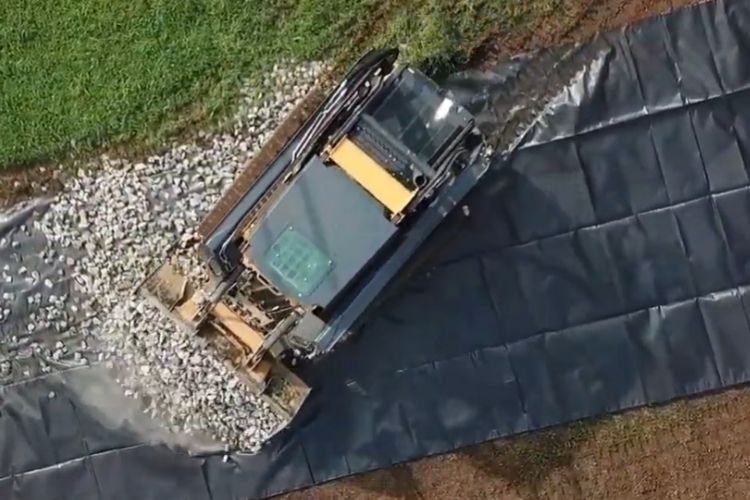Building a driveway is not an easy task. You need to know what you are doing and have the right tools for the job. Building a driveway can be done in two ways: using concrete or asphalt. The decision on which way to go should depend on the cost, your preference, and how much work you want to do yourself.
Advantages gravel driveways
- inexpensive
- easy to layout yourself
- seepable, which means that rainwater can run off without any problems
- save sewage fees (because the rainwater can seep away)
They can still look high quality and can be designed in very different ways.
Stabilization mats
To avoid ruts, special plastic honeycombs can be placed under the gravel surface. They hold the gravel in place and help prevent ruts and puddles. In addition, these honeycomb elements also reinforce the load-bearing capacity and usually eliminate the need for separate edge fixings. Their use is therefore worthwhile.
Geotextile fabric driveway
Geotextile fabric serves as a protection against unwanted weeds on the gravel surface, which then quickly looks unkempt. Geotextile fabric driveway is best fixed firmly with ground anchors.
Layer structure
The layered structure for a graveled driveway ideally looks like this:
- Weed fleece
- 30 cm gravel layer (can be cheaper gravel)
- 6 cm laying sand
- Soil honeycomb (stabilizing elements)
- 2 cm top layer of gravel (decorative gravel can be used here)
Gravel driveway installation tips
There are many different types of gravel, the best known being crushed stone. Crushed stones have a round shape and differ in size from pebble to gravel. In general, however, they must be as small as possible so that the ground is not too hard when driving on it. You should also pay attention to whether or not permeable water can pass through easily into the subsoil without problems because otherwise there will inevitably arise puddles after rainstorms and the ground will go soft and wet.





Comments are closed.